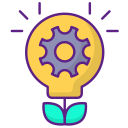In recent years, the wind energy sector has experienced significant progress driven by advancements in wind turbine efficiency. As the demand for renewable energy sources continues to grow, research and technological breakthroughs have propelled the evolution of wind turbines, making them more productive, reliable, and environmentally friendly. By optimizing various aspects of design, materials, and control systems, the industry is unlocking new levels of energy output while reducing costs. Below, we explore key areas where innovation is setting new standards for wind turbine performance and shaping the future of clean energy generation.
Innovations in Turbine Blade Design
Aerodynamic Improvements
Recent advancements in computational fluid dynamics have allowed for the fine-tuning of blade profiles to reduce drag and maximize lift. This means that blades can now be designed to capture more kinetic energy from slower winds, enhancing efficiency across a broader range of wind speeds. Utilizing biomimicry, engineers have studied the wings and fins of birds and marine animals, incorporating features such as serrated edges and curved surfaces into turbine blades to reduce turbulence and noise. These innovations not only boost efficiency but also contribute to quieter operation.
Materials and Composites
The quest for lighter, stronger, and more resilient materials has led to significant improvements in wind turbine blades. Modern blades often utilize advanced composites such as carbon fiber reinforced polymers, which combine high strength with low weight. This enables manufacturers to produce longer blades that do not overly stress the turbine’s structure or foundation. Enhanced material properties improve resistance to fatigue, corrosion, and extreme weather, extending the operational lifespan of turbines and reducing maintenance costs. Innovations in recyclability are also making blade disposal more sustainable.
Adaptive and Morphing Blades
Emerging technologies are enabling blades to adapt dynamically to changing wind conditions. Using sensors and actuators embedded within the blades, morphing structures can alter their shape in real-time to optimize energy capture and reduce structural loads. This adaptive capability allows turbines to respond smoothly to gusts or turbulent winds, preventing damage and improving overall efficiency. The implementation of smart materials that adjust stiffness or curvature provides another layer of control and resilience, positioning adaptive blades as a promising development for future turbine generations.
Advances in Generator and Drive Systems
Direct drive systems eliminate the need for traditional gearboxes, instead connecting the rotor to the generator via a single shaft. This simplification reduces mechanical losses and increases reliability since fewer moving parts result in lower wear and tear. Direct drive turbines are especially suitable for offshore installations, where maintenance access is limited and downtime is costly. Improved magnet technology, particularly the use of high-performance rare earth magnets, has enabled the widespread adoption of this design, facilitating smooth and efficient energy conversion across variable wind speeds.

Smart Control Systems and Digitalization
The deployment of IoT-enabled sensors throughout wind turbines has transformed maintenance operations. These sensors continuously collect data on vibrations, temperatures, and structural loads, feeding advanced analytics platforms that can predict component wear or impending failures with high accuracy. Predictive maintenance strategies help operators schedule service only when necessary, reducing downtime and costs while extending equipment lifespans. With remote monitoring capabilities, fleets of turbines can be managed efficiently from a centralized control center, detecting anomalies and responding swiftly to issues before they escalate.
Digital control systems utilize machine learning algorithms to analyze operational data in real time and automatically adjust turbine parameters for optimal performance. This includes fine-tuning blade pitch, yaw angle, and rotational speed to maximize energy output under varying wind conditions. By responding instantaneously to environmental changes, turbines can maintain stability and efficiency, even during turbulent weather. Continuous software updates and algorithm improvements ensure that turbines become smarter and more productive throughout their operational lifetime, adapting seamlessly to changing grid requirements.
Advanced digital systems facilitate the direct integration of wind turbines with energy storage solutions and smart grid infrastructures. Through real-time data exchange, wind farms can store excess energy in batteries during periods of high production and release it during demand peaks or wind lulls. This not only enhances grid reliability but also allows operators to participate in ancillary service markets, providing voltage and frequency support. By synchronizing with other renewable sources, digital turbines are paving the way for a stable, resilient, and fully renewable energy grid.
